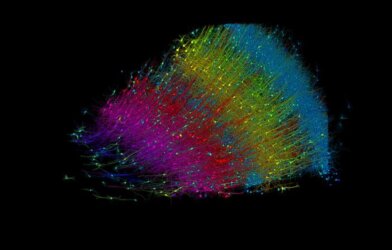Title: “Superhero Immune Cells Fight Alzheimer’s: How T Cells Save the Brain”
As many as 5.8 million Americans are currently living with Alzheimer’s disease, a condition that causes a gradual loss of cognitive abilities, including memory. Researchers at St. Jude Children’s Research Hospital have discovered some remarkable immune cells that might just be the brain’s superheroes against this disease.
Think of the immune system as your body’s defense team, usually battling against bacterial or viral invaders. But in the world of Alzheimer’s disease, there’s a different game at play. Scientists are starting to realize that the immune system might have a vital role in tackling neurodegenerative diseases like Alzheimer’s.
Meet the key players: microglia, the brain’s own immune cells. Their job is to clean up the mess in your brain, like those pesky beta-amyloid plaques, which are a hallmark of Alzheimer’s. But as the disease progresses, these microglia lose their ability to do their job properly and even end up causing more trouble by producing inflammation.
Now, enter the superheroes of our story: CD8+ T cells. These specialized T cells are like the brain’s immune SWAT team. They work alongside microglia to slow down the progression of Alzheimer’s. The researchers at St. Jude found that CD8+ T cells have a unique ability to communicate with microglia and keep them in check.
Imagine a secret handshake between two friends. CD8+ T cells use a handshake-like interaction with microglia to send a message: “Hey, stop causing all this inflammation!” This signal slows down the growth of those troublesome beta-amyloid plaques and eases the symptoms of Alzheimer’s in lab mice.
But here’s the twist: while CD8+ T cells can be heroes, they can also play a villainous role in Alzheimer’s. It’s a bit like a superhero with a dark side. The researchers discovered that there’s a fine balance between these T cells being protectors and contributors to the disease.
The key to this delicate balance is a protein called CXCR6, found on the surface of CD8+ T cells. It interacts with another protein called CXCL16, expressed by microglia. Think of it as the secret code that allows these superhero T cells to work their magic.
When the researchers deleted the gene responsible for CXCR6 in lab mice, things took a turn for the worse. The mice developed more severe Alzheimer’s symptoms because the CD8+ T cells couldn’t accumulate near the troublesome plaques or carry out their protective duties.
So, what does all of this mean for the fight against Alzheimer’s? Well, it’s a promising start. Understanding how these superhero immune cells operate in the brain is a crucial step towards finding new treatments for neurodegenerative diseases.
In the future, scientists might harness the power of CD8+ T cells to develop interventions that slow down or even halt the progression of Alzheimer’s. It’s like discovering a new weapon in the battle against this challenging disease.
So, while there’s still much to learn about these neuro-immune interactions, it’s clear that our immune system holds some extraordinary secrets that could help us unlock the mysteries of Alzheimer’s and, hopefully, find new ways to protect our brains.











